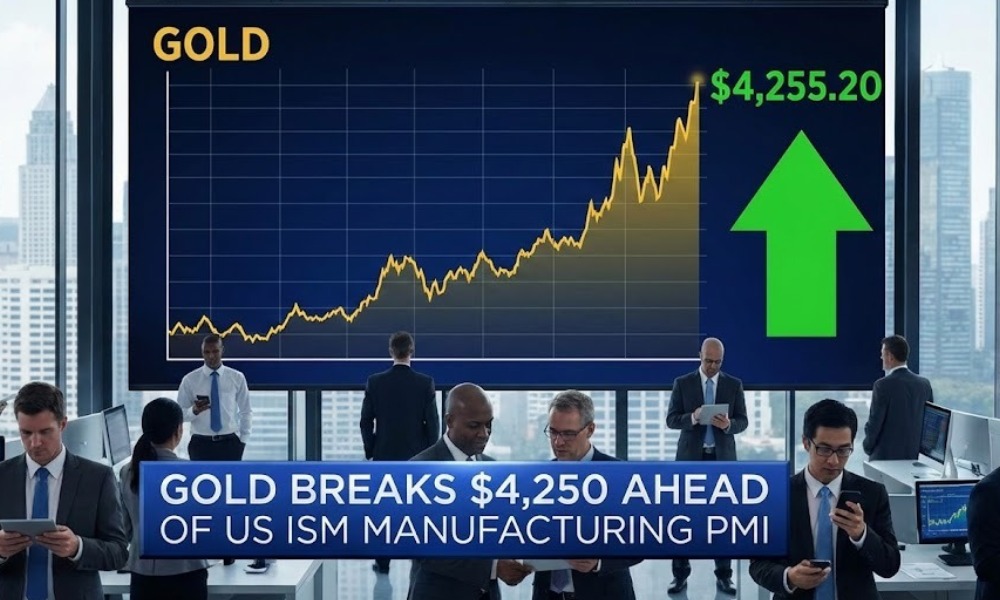International News
Trump tariffs and its impact on bullion industry
As of March 25, 2025, the United States, under President Donald Trump, has implemented various tariffs on multiple countries, leading to reciprocal measures from affected nations. Below is a summary of these actions

U.S. Enacted Tariffs:
- Steel and Aluminum Products: A 25% tariff was announced on February 10, 2025, and became effective on March 12, 2025.
- Canadian Goods: A 25% tariff was announced on February 1, 2025, and took effect on March 4, 2025. However, on March 6, tariffs on USMCA-compliant goods were delayed until April 2. Additionally, the tariff on potash was reduced to 10%.
- Canadian Oil and Gas: A 10% tariff was announced on February 1, 2025, with implementation delayed until April 2.
- Chinese Goods: An initial 10% tariff was announced on February 1, 2025, effective February 4, 2025. This rate increased to 20% on March 4,2025.
- Mexican Goods: A 25% tax was announced on February 1, 2025, and took effect on March 4, 2025. Tariffs on USMCA-compliant items were pushed back to April 2.
Proposed U.S. Tariffs:
- Reciprocal Tariffs: Announced on February 13, 2025, with implementation expected to begin on April 2.
- European Union Goods: On February 2, 2025, President Trump stated that taxes on European Union goods will be implemented pretty soon
- On March 13, he threatened a 200 percent levy on EU alcohol.
- Digital Service Taxes (DSTs): On February 21, 2025, President Trump directed the U.S. Trade Representative to initiate a Section 302 investigation into DSTs, particularly targeting France, Austria, Italy, Spain, Turkey, and the UK.
- Copper Imports: On February 25, 2025, the Commerce Secretary was directed to initiate a Section 232 investigation into copper imports.
- Timber and Lumber Imports: On March 1, 2025, the Commerce Secretary was directed to initiate a Section 232 investigation into timber and lumber imports.
Foreign Retaliatory Measures:
- Canada: Implemented a 25% tariff on certain U.S. goods effective March 4, 2025. On March 13, 2025, Canada expanded tariffs to include 25% on steel products, aluminium products, and miscellaneous goods.
- China: Imposed a 15% tariff on coal and liquefied natural gas, and a 10% tariff on oil and agricultural machinery, effective February 4, 2025. On March 10, 2025, China expanded tariffs to 10-15% on U.S. meat and agricultural products, suspended U.S. lumber imports, and revoked soybean import licenses for three U.S. firms.
- European Union: Announced planned tariffs on €4.5 billion of U.S. consumer goods, delayed from April 1, and €18 billion of U.S. steel and agricultural products, expected to take effect in mid-April.
Impact of US Tariffs on Bullion Industry
These measures have escalated global trade tensions, leading to increased economic uncertainty and potential impacts on the bullion Industry. TheTrump administration tariffs have significantly impacted the global bullion industry, particularly in terms of supply chains, pricing, and investor sentiment. Here are some key effects:
- Increased Gold and Silver Import Costs – If Trump imposes tariffs on gold imports, especially from the UK (via Bank of England reserves),
- premiums in India and other markets may rise due to supply disruptions. Any tariffs on silver imports could push up costs for industrial users
- and jewellery manufacturers.
- Market Uncertainty and Safe-Haven Demand – Trade war fears and economic uncertainty have historically driven safe-haven demand for gold.
- Investors have increased their bullion holdings as a hedge against currency fluctuations and geopolitical risks.
- Impact on Refining and Trade – Tariffs on dore imports could make refining costlier in major processing hubs like India and Switzerland. If China imposes retaliatory tariffs, it could disrupt gold flow and shift refining operations elsewhere.
- Effect on Bullion Prices and Premiums – Tariffs have distorted pricing, leading to higher premiums in key consuming markets like India and China. Increased import costs have widened the gap between domestic and international gold prices.
- Influence on Central Bank Gold Reserves – If tariffs impact gold trade routes, central banks might adjust their reserve strategies, possibly leading to increased domestic purchases.
International News
Gold prices climbed above $4,250 ahead US ISM Manufacturing PMI release

US spot Gold prices climbed above $4,250 early Monday, touching a six-week high as investors turned cautious ahead of the upcoming US ISM Manufacturing PMI release. The yellow metal is poised for further upside momentum if it secures a sustained daily close above the crucial $4,250 resistance level.
The US Dollar opened December on a softer note, pressured by rising expectations that the Federal Reserve may announce a rate cut next week. Growing market confidence in easing monetary conditions has boosted the appeal of non-yielding assets such as gold.
Analysts note that a decisive break and close above $4,250 could reinforce bullish sentiment and pave the way for an extended rally in the days ahead. As global markets await fresh cues from the US economic calendar, gold continues to benefit from a favorable macroeconomic backdrop and robust safe-haven demand.
-

 JB Insights1 hour ago
JB Insights1 hour agoWomen Leaders Driving the Luxury Renaissance
-

 BrandBuzz38 minutes ago
BrandBuzz38 minutes agoMCA raises “small company” thresholds – up to ₹10 cr capital & ₹100 cr turnover from 1st December 2025, major relief for jewellery trade
-

 National News5 hours ago
National News5 hours agoSHINESHILPI Announces the Launch of The Shine House, India’s Biggest B2B Jewellery Hub
-

 National News3 hours ago
National News3 hours agoTalla Jewellers Successfully Hosts Free Health Checkup Camp with Fortis Escorts Amritsar and Live For Others Foundation







